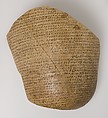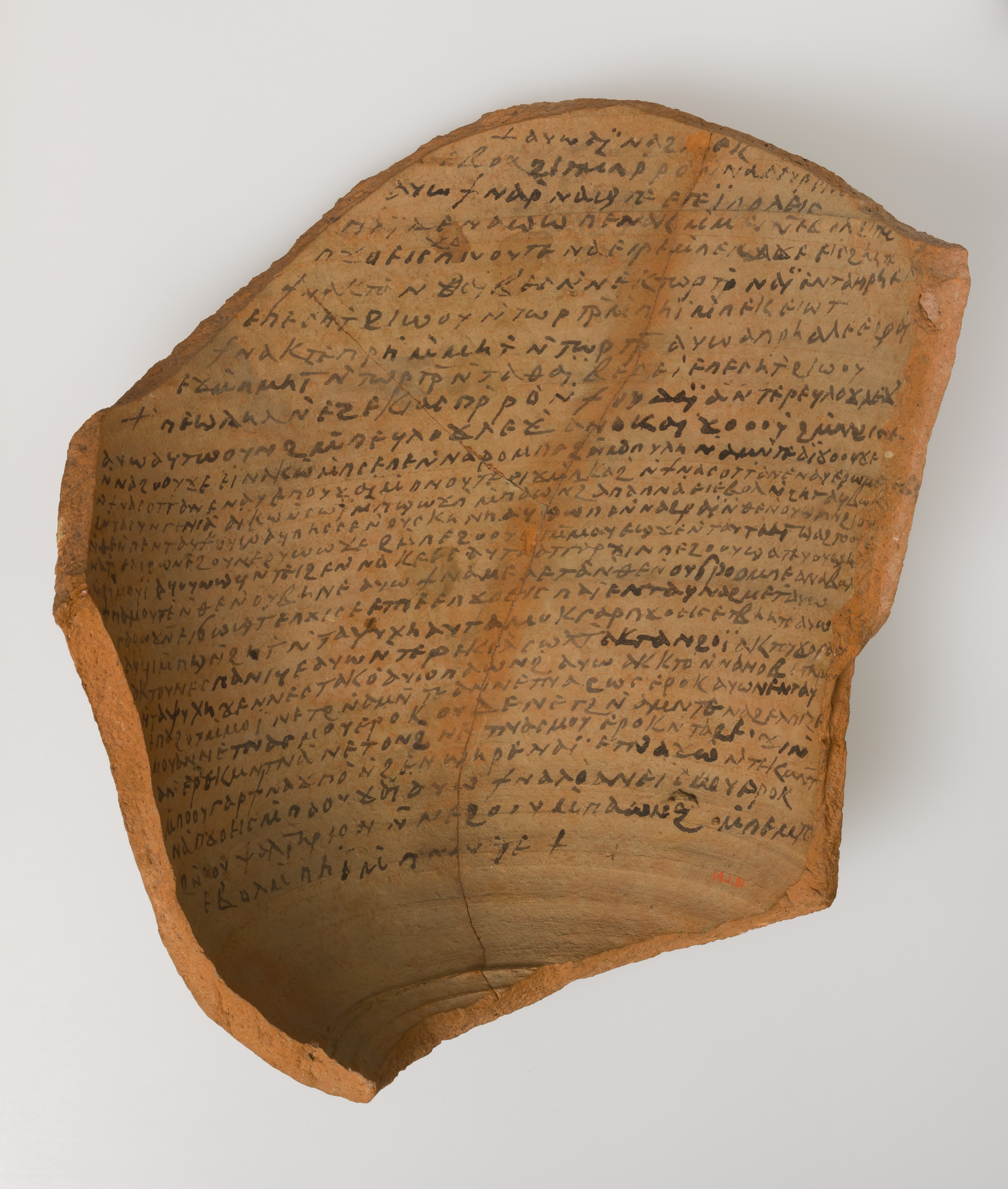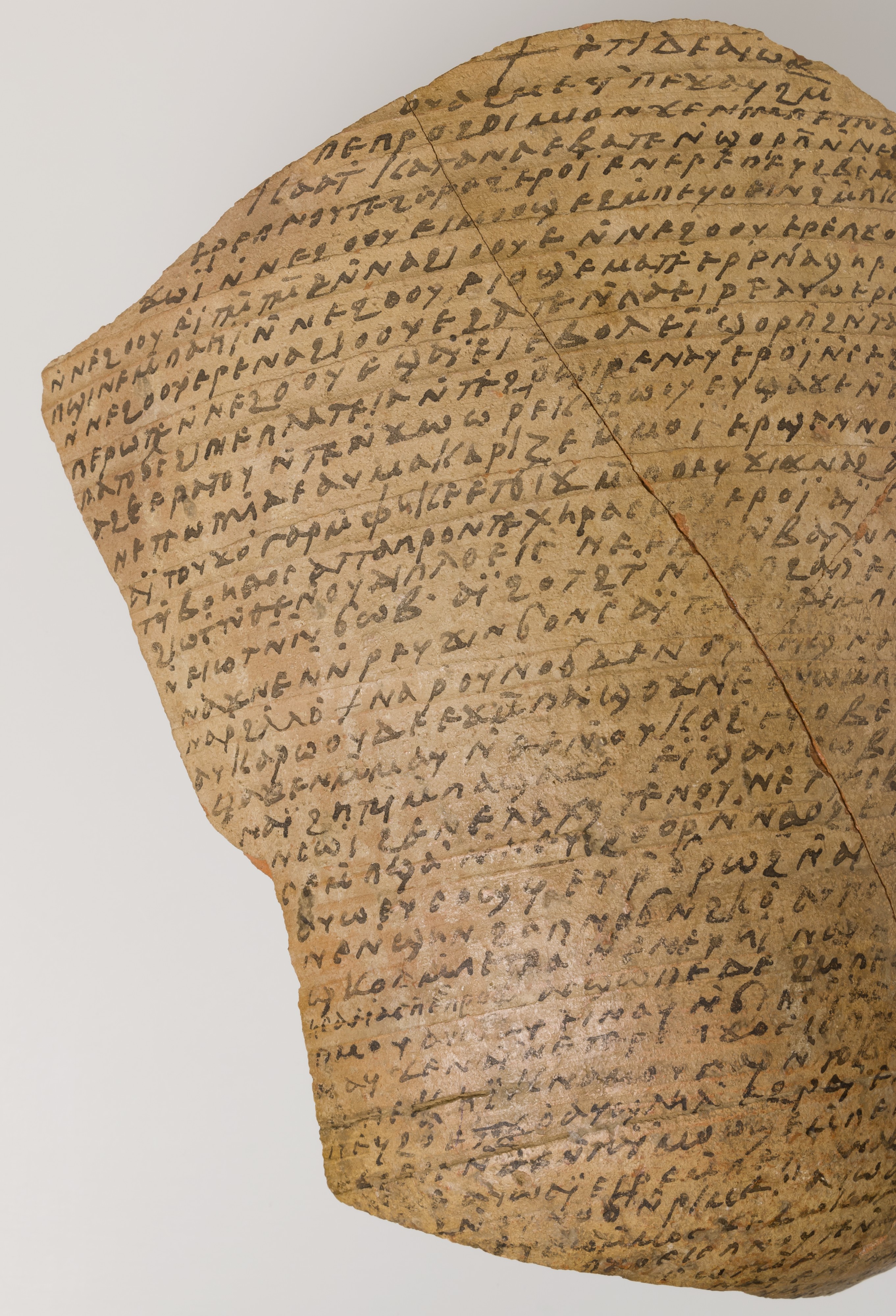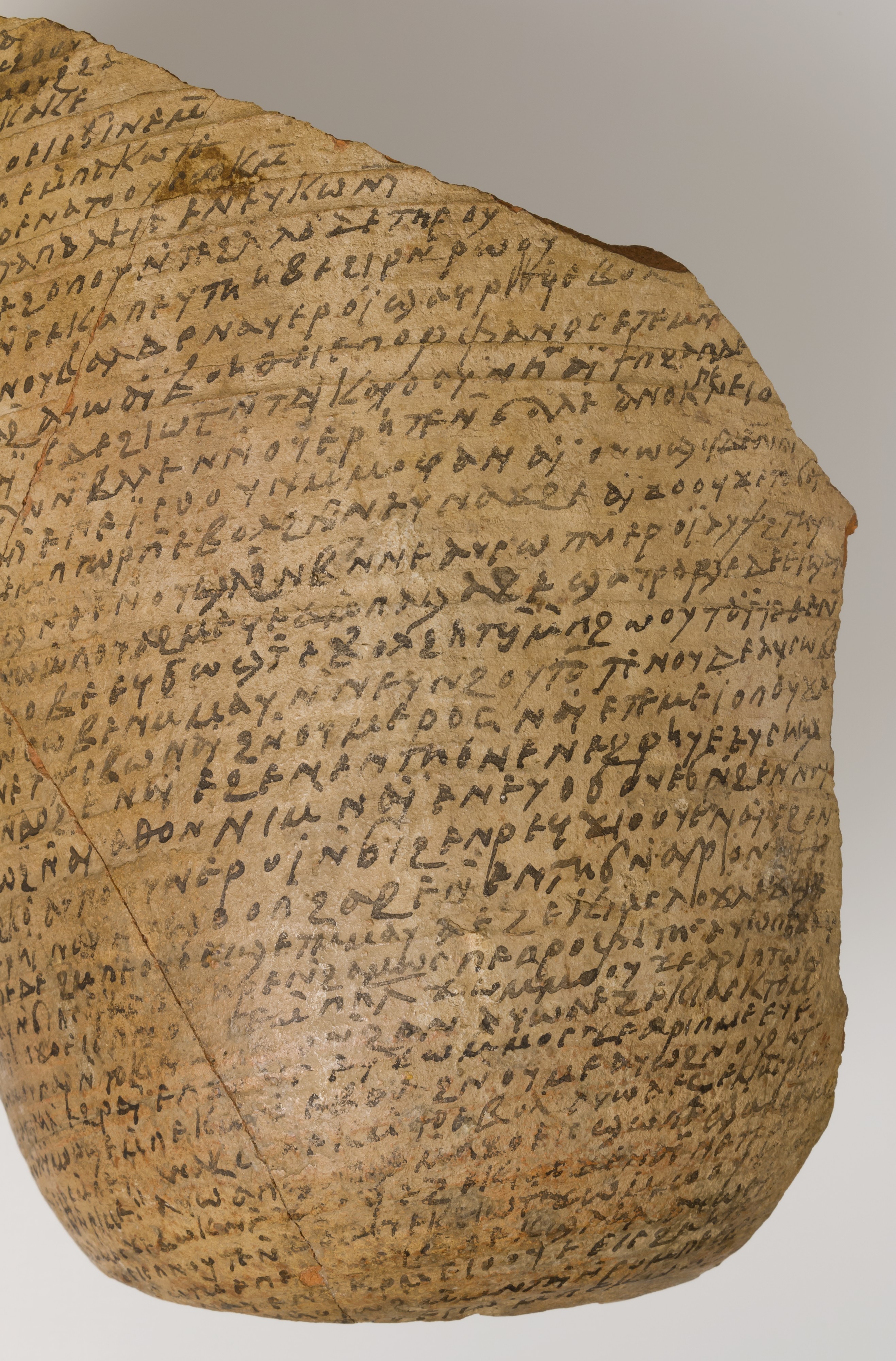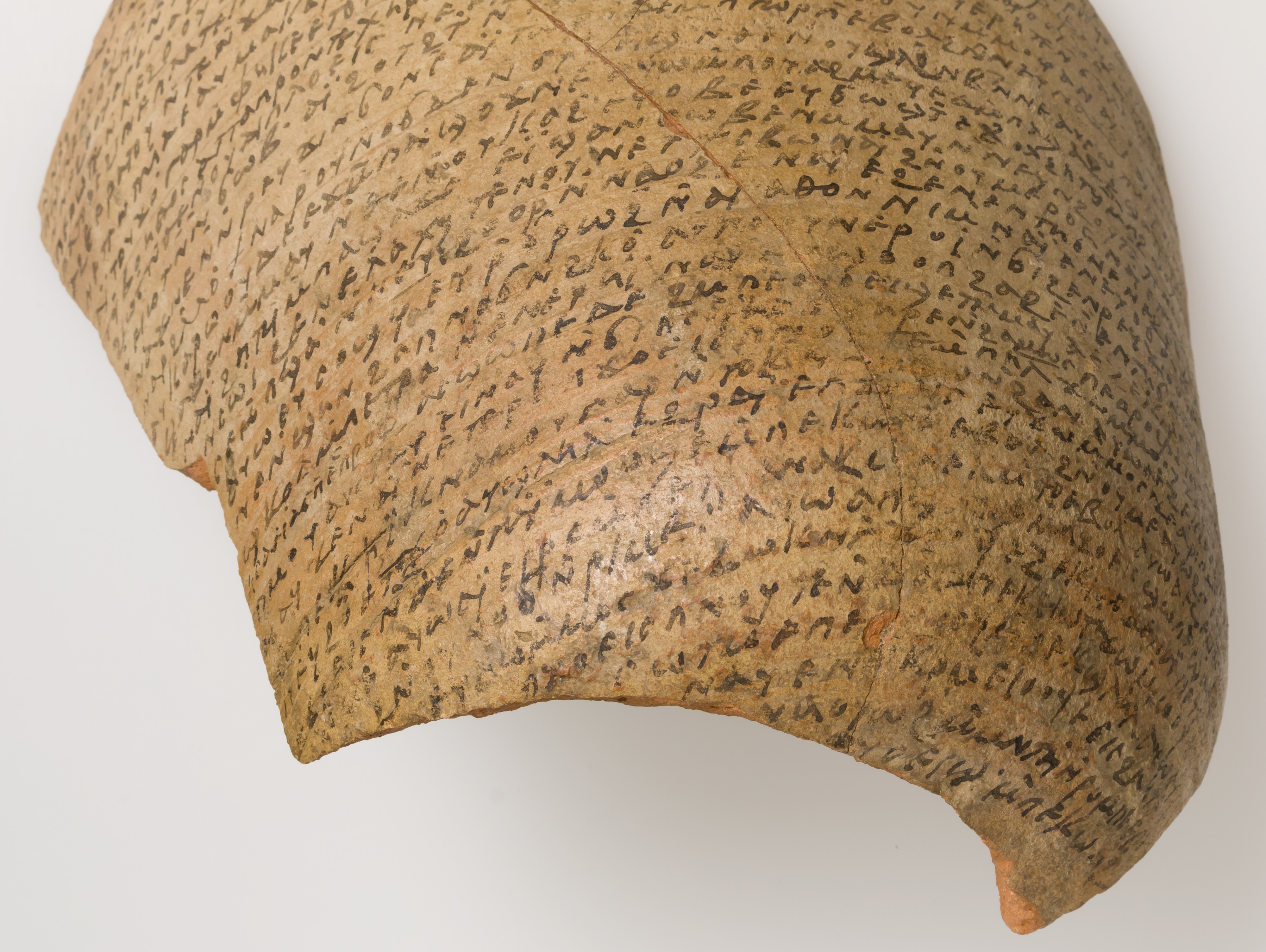Ostrakon with Texts from the Bible
Not on view
Ostraca are texts written on broken pottery, which were employed when parchment was unavailable or too expensive. At Epiphanius a large number of ostraca were discovered in the monastery, including in its rubbish heaps; they record biblical verses, legal documents, sermons, financial accounts, school texts, and letters requesting assistance and prayers. Some reveal that, even at the southernmost border of the Empire, people were still aware of events in the capital, Constantinople.
Ostracon with Texts from the Bible
This is one of the largest Coptic ostraca known. It records two sections of the Bible: most of Job’s final plea for the return of his life to its earlier, better condition (Job 29:1–30:7) and the description of Hezekiah’s illness and recovery (Isaiah 38:1–20), both events occurring by the grace of God.
Due to rights restrictions, this image cannot be enlarged, viewed at full screen, or downloaded.
This artwork is meant to be viewed from right to left. Scroll left to view more.
